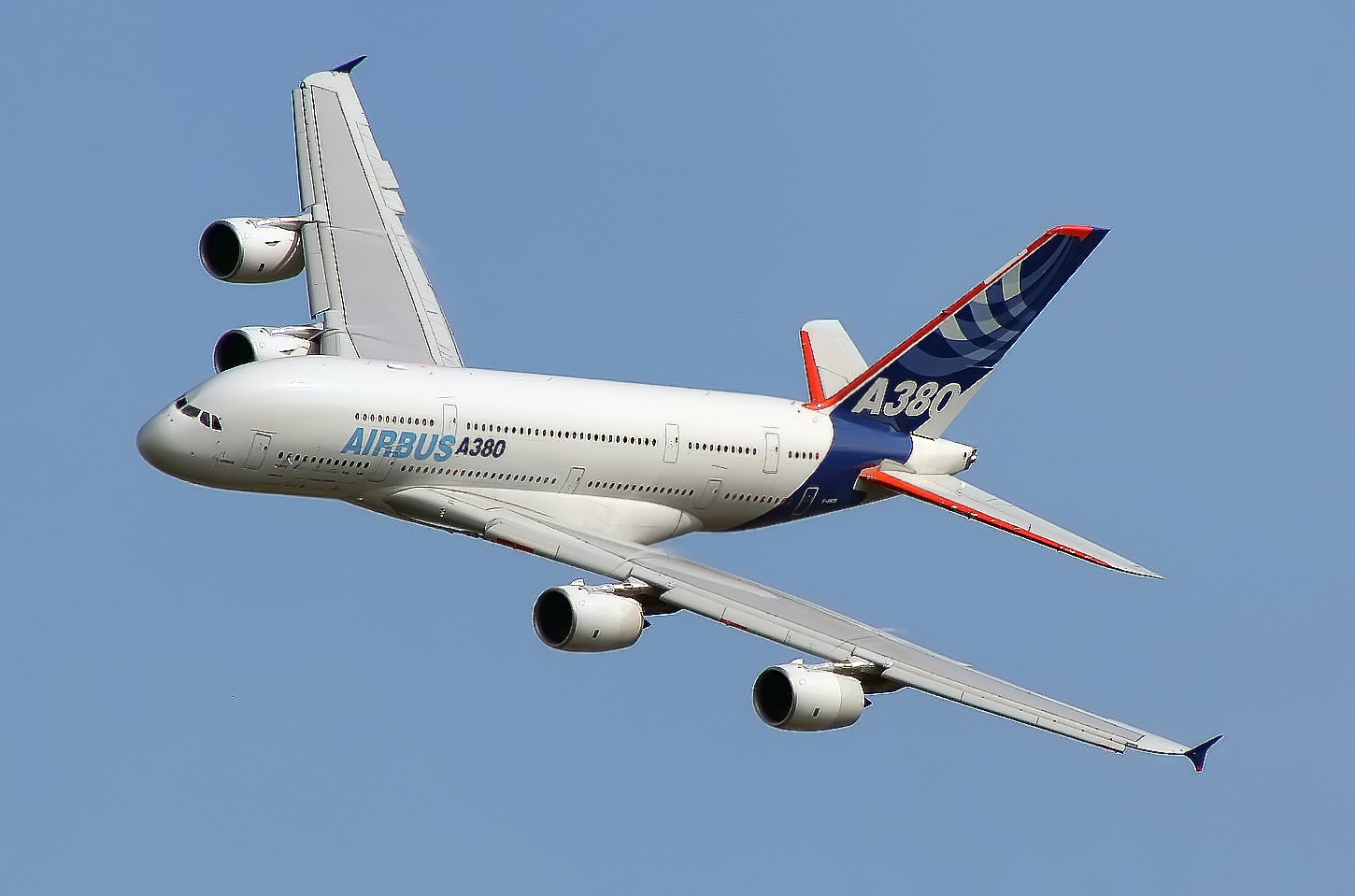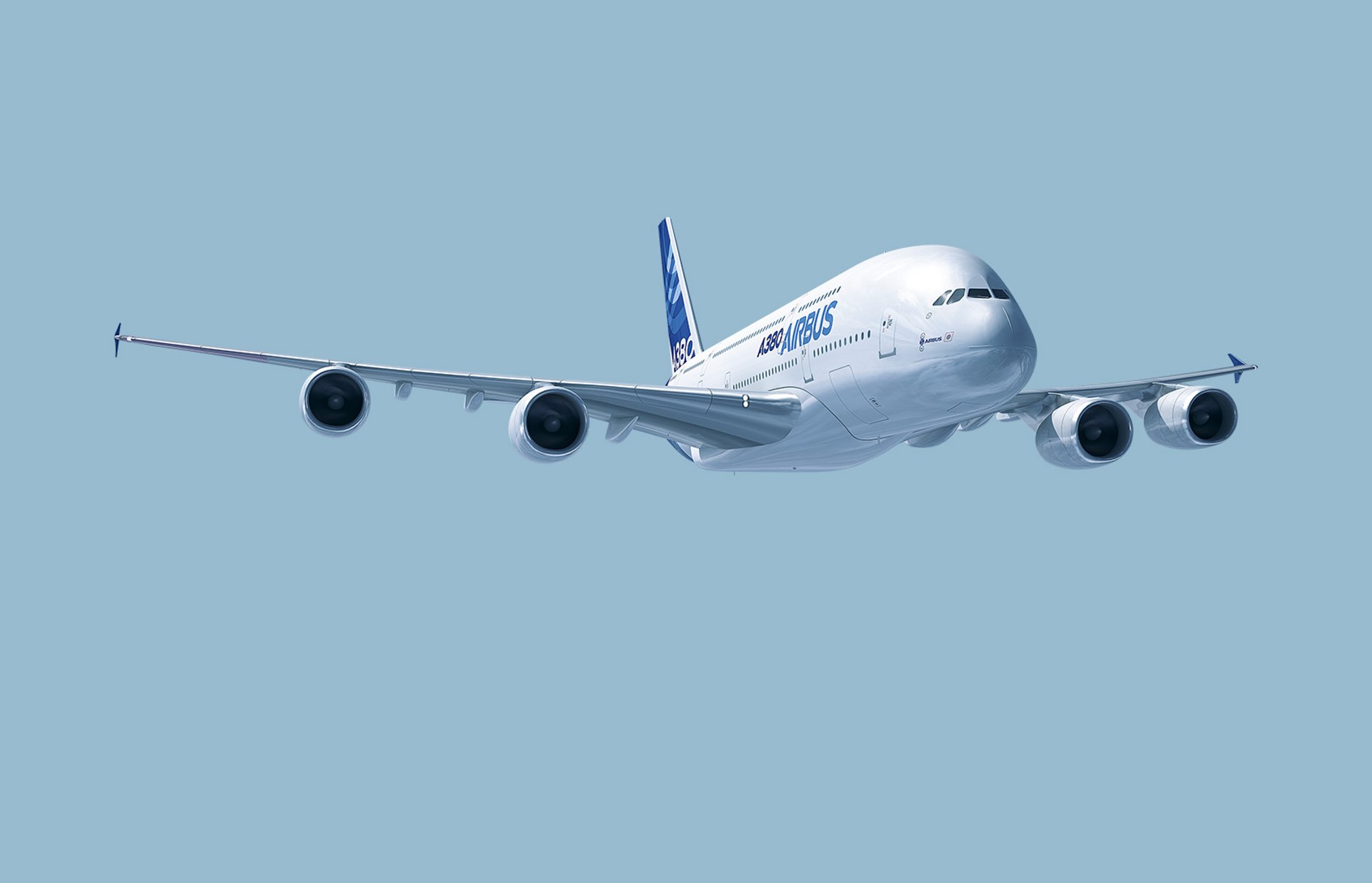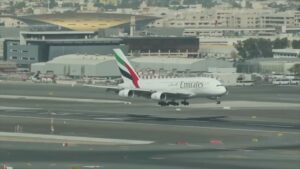
The Airbus A380 is the world’s largest passenger airliner, a wide-body aircraft manufactured by Airbus. The first prototype was unveiled in Toulouse on 18 January 2005, with its first flight on 27 April 2005. The full-length double-deck aircraft has a typical seating capacity of 525, though it is certified for up to 853 passengers. I simply love Airbus planes – particularly A350 & A380 and has been very closely following since the project inception in 2000s to demo flights in 2005 / 2006 when it visited Shanghai among other cities in the world to first flight between Singapore – Sydney in 2007 and till now. Im very sad that production of A380 would cease in 2021. I also followed the Airbus factories in Hamburg & Tianjin


What is Airbus ?
- Airbus SE is a European multinational aerospace corporation
- It is the world’s second largest such company after its primary competitor, Boeing
- Airbus is registered in the Netherlands ; its shares are traded in Germany, France and Spain
- It designs, manufactures and sells civil and military aerospace products worldwide and manufactures aircraft in the European Union and various other countries
- The company has three divisions: Commercial Aircraft, Defence and Space, and Helicopters, the third being the largest in its industry in terms of revenues and turbine helicopter deliveries
- The company’s main civil aeroplane business is based in Blagnac, France, a suburb of Toulouse, with production and manufacturing facilities mostly in the European Union (France, Germany, Spain, United Kingdom) but also in China and the United States
- Final assembly production is based in Toulouse, France; Hamburg, Germany; Seville, Spain; Tianjin, China, and Mobile, Alabama, United States
- The company produces and markets the first commercially viable digital fly-by-wire airliner, the Airbus A320 and the world’s largest passenger airliner, the A380
- The 12000th aircraft, an A220, was delivered to Delta Air Lines on 20 May 2019
- By October 2016, the global Airbus fleet have performed more than 110 million flights, totaling over 215 billion kilometres and carrying 12 billion passengers
- Airbus’s registered headquarters is in Leiden, Netherlands, with the operating head office located in Toulouse
- The company is led by CEO Guillaume Faury and is a component of the Euro Stoxx 50 stock market index
|
Formerly
|
Pre-2017 parent company: European Aeronautic Defence and Space Company NV (2000–2014), Airbus Group NV (2014–2015), Airbus Group SE (2015–2017) Pre-2017 subsidiary: Airbus Industrie GIE (1970–2001), Airbus SAS (2001–2017) |
|---|---|
|
Type
|
Societas Europaea (SE) |
| Traded as | Euronext Paris: AIR BMAD: AIR FWB: AIR CAC 40 Component Euro Stoxx 50 component |
| ISIN | NL0000235190 |
| Industry | Aerospace, Defence |
| Predecessor | Aérospatiale-Matra, DASA, and CASA |
| Founded | 18 December 1970 (as Airbus Industrie GIE) |
| Founder | Roger Béteille, Felix Kracht, Henri Ziegler, Franz Josef Strauss |
| Headquarters |
|
|
Area served
|
Worldwide |
|
Key people
|
Denis Ranque (Chairman) Guillaume Faury (CEO) |
| Products | Civilian A220, A300, A310, A318, A319, A320, A321, A330, A340, A350, A380 |
What are the key Aircrafts of Airbus ?
Revenues by division, as of 2018
- Commercial aircraft (74%)
- Defence and Space (17%)
- Helicopters (9%)
Civilian Aircraft
- The Airbus product line started with the A300, the world’s first twin-aisle, twin-engined aircraft. A shorter, re-winged, re-engined variant of the A300 is known as the A310
- Building on its success, Airbus launched the A320, particularly notable for being the first commercial jet to use a digital fly-by-wire control system
- The A320 has been, and continues to be, a major commercial success
- The A318 and A319 are shorter derivatives with some of the latter under construction for the corporate business jet market as Airbus Corporate Jets
- A stretched version is known as the A321. The A320 family’s primary competitor is the Boeing 737 family
- The longer-range widebody products— the twin-jet A330 and the four-engine A340— have efficient wings, enhanced by winglets. The Airbus A340-500 has an operating range of 16700 kilometres (9,000 nmi), the second longest range of any commercial jet after the Boeing 777-200LR (range of 17,446 km or 9,420 nautical miles)
- All Airbus aircraft developed since then have cockpit systems similar to the A320, making it easier to train crew
- Production of the four-engine A340 was ended in 2011 due to lack of sales compared to its twin-engine counterparts, such as the Boeing 777
- Airbus supplied replacement parts and service for Concorde until its retirement in 2003
| Aircraft | Description | Seats | Max | 1st flight | Production ceased |
|---|---|---|---|---|---|
| A220 | 2 engines, single aisle, originally Bombardier CSeries | 108–130 | 133–160 | 2013-09-16 | |
| A300 | 2 engines, twin aisle | 228–254 | 361 | 1972-10-28 | 2007-03-27 (561 built) |
| A310 | 2 engines, twin aisle, modified A300 | 187 | 279 | 1982-04-03 | 2007-03-27 (255 built) |
| A318 | 2 engines, single aisle, shortened 6.17 m from A320 | 107 | 132 | 2002-01-15 | 2013-12-31 (80 built) |
| A319 | 2 engines, single aisle, shortened 3.77 m from A320 | 124 | 156 | 1995-08-25 | |
| A320 | 2 engines, single aisle | 150 | 180 | 1987-02-22 | |
| A321 | 2 engines, single aisle, lengthened 6.94 m from A320 | 185 | 236 | 1993-03-11 | |
| A330 | 2 engines, twin aisle | 246–300 | 406–440 | 1992-11-02 | |
| A340 | 4 engines, twin aisle | 239–380 | 380–440 | 1991-10-25 | 2011-11-10 (377 built) |
| A350 | 2 engines, twin aisle | 270–350 | 440 | 2013-06-14 | |
| A380 | 4 engines, double deck, twin aisle | 555 | 853 | 2005-04-27 | 2021 (planned) |
- The Airbus Corporate Jets markets and modifies new aircraft for private and corporate customers
- It has a model range that parallels the commercial aircraft offered by the company, ranging from the A318 Elite to the double-deck Airbus A380 Prestige
- Following the entry of the 737 based Boeing Business Jet, Airbus joined the business jet market with the A319 Corporate Jet in 1997
- Although the term Airbus Corporate jet was initially used only for the A319CJ, it is now often used for all models, including the VIP widebodies
- As of December 2008, 121 corporate and private jets are operating, 164 aircraft have been ordered, including an A380 Prestige and 107 A320 family Corporate Jet
Military Aircraft
- In the late 1990s Airbus became increasingly interested in developing and selling to the military aviation market
- It embarked on two main fields of development: aerial refuelling with the Airbus A310 MRTT (Multi-Role Tanker Transport) and the Airbus A330 MRTT, and tactical airlift with the A400M
New supersonic passenger plane
- In September 2014, Aerion partnered with Airbus (mainly Airbus Defence) to collaborate on designing the Aerion AS2, a supersonic 11-seater private business jet, hoping for a market entry in 2021
Helicopters
- Airbus Helicopters, formerly known as Eurocopter, is a helicopter manufacturing and support company
Describe the Airbus aircraft numbering system ?
- The Airbus numbering system is an alpha numeric model number followed by a dash and a three digit number
- The model number often takes the form of the letter “A” followed by a ‘3’, a digit, then followed normally by a ‘0’, for example A350
- There are some exceptions such as: A220, A318, A319, A321 and A400M
- The succeeding three digit number represents the aircraft series, the engine manufacturer and engine version number respectively
- To use an A380-800 with Engine Alliance (EA) GP7200 engines as an example ; The code is 8 for series 800, 6 for Engine Alliance and engine version 1, thus the aircraft number is A380-861
- An additional letter is sometimes used. These include, ‘C’ for a combi version (passenger/freighter), ‘F’ for a freighter model, ‘R’ for the long range model, and ‘X’ for the enhanced model
Engine codes
| Code | Manufacturing company |
|---|---|
| 0 | General Electric (GE) |
| 1 | CFM International (GE and SNECMA, now a subsidiary of Safran) |
| 2 | Pratt & Whitney (P&W) |
| 3 | International Aero Engines (P&W, R-R, MTU, Kawasaki, Mitsubishi, and IHI) |
| 4 | Rolls-Royce (R-R) |
| 5 | CFM International (GE and SNECMA/Safran) (CFM International LEAP-1A for A320 NEO Family) |
| 6 | Engine Alliance (GE and P&W) |
| 7 | Pratt & Whitney (P&W) (Pratt & Whitney PW1100G for A320 NEO) |
Orders and deliveries
| Aircraft | Orders | Deliveries | In operation | Unfilled |
|---|---|---|---|---|
| A220 | 537 | 57 | 57 | 480 |
| A300 | 561 | 561 | 237 | — |
| A310 | 255 | 255 | 70 | — |
| A320ceo* | 8,135 | 7,970 | 7,922 | 165 |
| A320neo* | 6,471 | 635 | 635 | 5,836 |
| A330ceo* | 1,496 | 1,436 | 1,400 | 60 |
| A330neo* | 238 | 37 | 37 | 235 |
| A340* | 377 | 377 | 265 | — |
| A350* | 894 | 235 | 235 | 659 |
| A380 | 321 | 234 | 233 | 87 |
| Total | 19340 | 11763 | 10717 | 7577 |
* All models included. Data as of 5 December 2019
Subsidiaries
- Airbus APWorks
- AirBusiness Academy
- Airbus Group Inc. – (previously EADS North America) the U.S. holding company for the North American activities of Airbus Group
- Airbus Transport International – Cargo Airline managing the transportation of Airbus parts between different facilities.
- APSYS
- CRISA
- Dornier Consulting
- EADS EFW
- NAVBLUE INC
- Premium AEROTEC
- Satair
- Stelia Aerospace
- Tesat-Spacecom
- Testia
Joint ventures
| Name | Holding | Description |
|---|---|---|
| Airbus Canada Limited Partnership |
50.01%
|
manufacturer of Airbus A220 aircraft |
| ArianeGroup |
50%
|
manufacturer of Ariane 5 and Ariane 6 launch vehicles |
| Arianespace |
30%
|
launch service provider |
| ATR |
50%
|
manufacturer of ATR 42 and ATR 72 regional aircraft |
| Dassault Aviation |
10%
|
manufacturer of Dassault Rafale and Dassault Mirage 2000 |
| Eurofighter GmbH |
46%
|
manufacturer of Eurofighter Typhoon |
| MBDA |
37.5%
|
develops and manufactures missiles |
- In September 2014 Airbus considered divesting Dassault and several other units to focus on aerospace
- They reduced their shareholding in Dassault Aviation to 10% by the end of 2016
AIRBUS : MANUFACTURING FACILITIES
Airbus has several final assembly lines for different models and markets. These are:
- Toulouse, France (A320, A330 family, A350 family and A380)
- Hamburg, Germany (A318, A319, A320 and A321)
- Seville, Spain (A400M)
- Tianjin, China (A319 and A320)
- Mobile, Alabama, USA (A319, A320 and A321)
- Mirabel, Canada (A220)
- Airbus, however, has a number of other plants in different European locations, reflecting its foundation as a consortium
- An original solution to the problem of moving aircraft parts between the different factories and the assembly plants is the use of the Airbus Beluga, a modified cargo aircraft capable of carrying entire sections of fuselage
- This solution has also been investigated by Boeing, which retrofitted 4 747-400s to transport the components of the 787
- An exception to this scheme is the A380, whose fuselage and wings are too large for sections to be carried by the Beluga. Large A380 parts are brought by ship to Bordeaux and then transported to the Toulouse assembly plant by the Itinéraire à Grand Gabarit, a specially enlarged waterway and road route
- Airbus opened an assembly plant in Tianjin, People’s Republic of China for its A320 series airliners in 2009
- Airbus started constructing a $350 million component manufacturing plant in Harbin, China in July 2009, which will employ 1,000 people
- Operated by the end of 2010, the 30000 square metre plant will manufacture composite parts and assemble composite work-packages for the A350 XWB, A320 families and future Airbus programmes
- Harbin Aircraft Industry Group Corporation, Hafei Aviation Industry Company Ltd, AviChina Industry & Technology Company and other Chinese partners hold the 80% stake of the plant while Airbus control the remaining 20%
- North America is an important region to Airbus in terms of both aircraft sales and suppliers
- 2000 of the total of approximately 5,300 Airbus jetliners sold by Airbus around the world, representing every aircraft in its product line from the 107-seat A318 to the 565-passenger A380, are ordered by North American customers
- According to Airbus, US contractors, supporting an estimated 120,000 jobs, earned an estimated $5.5 billion (2003) worth of business
- For example, one version of the A380 has 51% American content in terms of work share value
- Plans for a Mobile, Alabama aircraft assembly plant – Construction began on 8 April 2013, and became operable by 2015 producing up to 50 aircraft per year by 2017
- In February 2019, Airbus stated that production of the A380 will end in 2021 after Emirates, the biggest customer for the plane, reduced its outstanding order for 53 planes to just fourteen
What is AIRBUS A380 ?
- The Airbus A380 is the world’s largest passenger airliner, a wide-body aircraft manufactured by Airbus
- The first prototype was unveiled in Toulouse on 18 January 2005, with its first flight on 27 April 2005
- The full-length double-deck aircraft has a typical seating capacity of 525, though it is certified for up to 853 passengers
- It is powered by four Engine Alliance GP7200 or Rolls-Royce Trent 900 turbofans providing a range of 8000 nmi (14800 km)
- As of November 2019, Airbus has received 251 firm orders and delivered 240 aircraft; Emirates is the biggest A380 customer with 123 ordered, of which 113 have been delivered
- It was first delivered to Singapore Airlines on 15 October 2007 and entered service on 25 October
- Production peaked at 30 per year in 2012 and 2014
- However, Airbus concedes that its $25 billion investment for the aircraft cannot be recouped
- On 14 February 2019, after Emirates reduced its last orders in favour of the A350 and the A330neo, Airbus announced that A380 production would end by 2021

